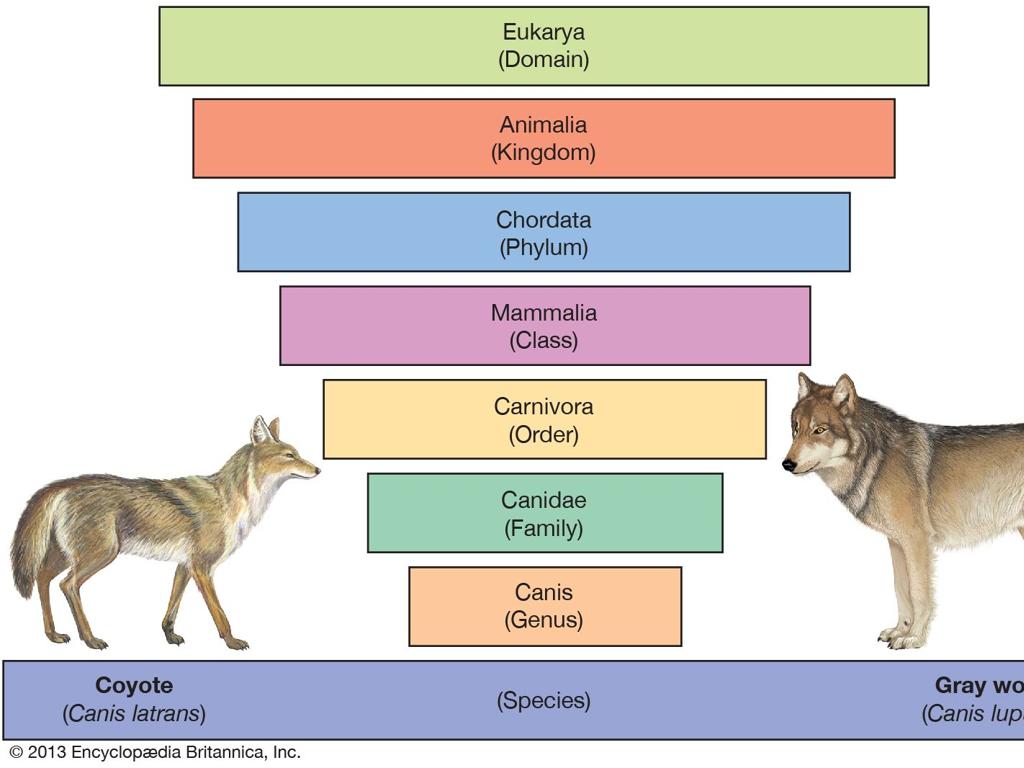Ancient Mediterranean: 3500 B.C.E.-300 C.E
Subject: Arts and humanities
Grade: High school
Topic: Ap /College Art History
Please LOG IN to download the presentation. Access is available to registered users only.
View More Content
Exploring Ancient Mediterranean Art
– Overview of Mediterranean Civilizations
– Civilizations like Egypt, Greece, and Rome shaped the region.
– Timeline: 3500 B.C.E.-300 C.E.
– A period marked by significant cultural and artistic development.
– Art’s role in ancient societies
– Art was central to religion, politics, and daily life.
– Interpreting historical significance
– Understanding art helps us decipher values and beliefs of these cultures.
|
This slide introduces students to the rich tapestry of Ancient Mediterranean civilizations and their art. The timeline provides a framework for understanding the progression of artistic styles and cultural influences from early Egyptian to late Roman periods. Emphasize the integral role of art in expressing the values, beliefs, and daily experiences of these societies. Artifacts like sculptures, pottery, and paintings not only serve as aesthetic expressions but also as historical documents that offer insights into the ancient world. Encourage students to consider how art reflects the societal structure, religious practices, and technological advancements of the time.
Geographical Context of Ancient Mediterranean Art
– Locate the Mediterranean region
– A region encompassing parts of three continents: Europe, Asia, and Africa.
– Influence of natural resources on art
– Availability of marble and metals shaped sculpture and architecture.
– Significance of trade routes
– Trade routes facilitated the spread of artistic techniques and materials.
– Cultural exchange and its impact
– Interaction among diverse cultures led to a fusion of artistic styles.
|
This slide aims to provide students with an understanding of how geography influenced the art of the Ancient Mediterranean. Begin by identifying the Mediterranean region, emphasizing its location as a crossroads between Europe, Asia, and Africa. Discuss how the natural resources, such as marble and metals, available in this region influenced the development of art forms like sculpture and architecture. Highlight the importance of trade routes in spreading artistic ideas and materials, which allowed for a rich cultural exchange. This exchange led to the blending of artistic styles and techniques, which is evident in the art and architecture from this period. Encourage students to consider how geography can shape cultural and artistic development in any era.
Major Civilizations of the Ancient Mediterranean
– Egyptian civilization overview
– Known for pyramids, hieroglyphs, and pharaohs
– Greek civilization contributions
– Greek art: sculpture, pottery, and the Parthenon
– Roman architectural influence
– Romans built roads, aqueducts, and the Colosseum
– Cross-cultural interactions
– Artistic styles and techniques were shared across cultures
|
This slide aims to provide a succinct overview of three influential civilizations of the Ancient Mediterranean: Egyptian, Greek, and Roman. Each civilization made unique contributions to art and architecture that have stood the test of time. Egyptian civilization is renowned for its monumental architecture like the pyramids and its writing system, hieroglyphs. Greek civilization is celebrated for its classical sculpture, pottery, and iconic temples such as the Parthenon. Roman civilization is remembered for its engineering marvels, including extensive road networks, aqueducts, and grand structures like the Colosseum. It’s also important to note the cross-cultural influences that occurred as these civilizations interacted with each other, leading to an exchange of artistic ideas and techniques. Encourage students to explore how these civilizations borrowed and adapted cultural elements from one another, resulting in a rich tapestry of cultural and artistic heritage.
Exploring Egyptian Art and Architecture
– Defining Egyptian art characteristics
– Use of symmetry, hierarchical proportions, and monumental scale
– Symbolism in Egyptian art
– Gods, afterlife, and pharaoh’s power depicted through symbols
– The Pyramids of Giza
– One of the Seven Wonders of the Ancient World, tombs for pharaohs
– The Great Sphinx of Giza
– Mythical creature with a lion’s body and a human head, symbolizing royalty and power
|
This slide aims to introduce students to the distinctive features of Egyptian art and architecture, emphasizing the cultural importance of symmetry, scale, and hierarchical proportions. Discuss the prevalent use of symbolism to represent divine concepts, the afterlife, and the pharaoh’s authority. Highlight the Pyramids of Giza as a testament to the architectural ingenuity of the ancient Egyptians and as a symbol of their powerful rulers. The Great Sphinx of Giza should be discussed as an iconic monument combining the king’s head with a lion’s body, representing strength and wisdom. Encourage students to reflect on the enduring legacy of these monuments and their significance in the study of ancient civilizations.
Exploring Greek Art: An Evolutionary Journey
– Greek art evolution: 3 key periods
– Archaic (rigid figures), Classical (idealized forms), Hellenistic (dramatic emotions)
– Mythology’s influence on art
– Gods, heroes, and myths depicted in sculptures and pottery
– The Parthenon: Art and architecture
– A temple on the Athenian Acropolis, Greece, dedicated to the goddess Athena
– Understanding Hellenistic innovation
– Hellenistic period saw more naturalistic styles and emotional expressions in art
|
This slide aims to provide students with an overview of the evolution of Greek art through its most significant periods: Archaic, where art was characterized by stiff and formal figures; Classical, which is known for its idealized human forms and balanced proportions; and Hellenistic, where art became more expressive and dramatic. The role of mythology in shaping Greek art is crucial, as it provided a rich source of subject matter that was depicted in various forms, from pottery to sculpture. The Parthenon serves as a case study to examine the intersection of art and architecture, reflecting the cultural and religious significance of the time. Lastly, the innovations of the Hellenistic period introduced a new level of naturalism and emotional depth to the art, setting the stage for future artistic developments. Encourage students to explore these periods further by examining specific works of art and considering the historical context in which they were created.
Exploring Roman Art and Architecture
– Roman architectural mastery
– Innovations like arches, domes, and vaults allowed for monumental structures.
– Significance of Roman portraiture
– Portraits were a symbol of status and power in Roman society.
– The Colosseum: An architectural marvel
– The Colosseum exemplifies Roman engineering and social importance.
– Influence of Roman art on history
|
This slide delves into the sophistication of Roman art and architecture, highlighting their innovative use of arches, domes, and vaults which enabled them to build grand and enduring structures. Emphasize the cultural significance of portraiture in Roman society, where it served as a means to showcase one’s lineage and influence. The Colosseum is presented as a case study to illustrate the grandeur and ingenuity of Roman architecture, as well as its role in the social fabric of the time. Discuss how these elements have influenced subsequent architectural designs and how they reflect the values and priorities of Roman civilization. Encourage students to consider the lasting impact of Roman art and architecture on modern society.
Comparative Analysis of Ancient Mediterranean Art
– Compare art across civilizations
– Examine similarities and differences in style, technique, and symbolism.
– Influence of early art on later periods
– How did Ancient Egyptian art impact Greek and Roman art?
– Discuss art continuity and change
– Identify which artistic traditions persisted and which ones transformed over time.
– Analyze Mediterranean art evolution
– Trace the development from archaic to more naturalistic forms.
|
This slide aims to delve into a comparative analysis of art forms from different civilizations of the Ancient Mediterranean. Students should be encouraged to look at various aspects such as style, technique, and symbolism to compare and contrast the art forms. Discuss how earlier civilizations like the Egyptians influenced later ones, including the Greeks and Romans, and explore the continuity and changes that occurred in Mediterranean art over time. Highlight the evolution from the rigid, formal representations of early periods to the more naturalistic and realistic depresions in later periods. Encourage students to think critically about why certain elements persisted and others changed, considering cultural, political, and social influences.
Artistic Techniques of the Ancient Mediterranean
– Ancient art materials and methods
– Utilized natural resources like stone, metals, and clay
– Techniques: Fresco, sculpture, pottery
– Fresco: painting on wet plaster; Sculpture: stone/marble carving; Pottery: clay shaping and firing
– Preserving ancient artworks
– Challenges include weathering, erosion, and human impact
|
This slide aims to provide an overview of the artistic techniques used in the Ancient Mediterranean. Highlight the use of natural materials available at the time, such as stone, metals, and clay, and how these were transformed into cultural artifacts. Discuss the specific techniques of fresco painting, sculpture, and pottery, giving examples of each, such as the frescoes of Pompeii, Greek marble statues, and amphorae from ancient Greece. Emphasize the importance of preservation efforts to maintain these artworks for future generations, considering factors like environmental conditions and historical looting. Encourage students to think about how these techniques and challenges of preservation contribute to our understanding of ancient cultures.
Class Activity: Analyzing Ancient Mediterranean Artifacts
– Break into small groups
– Analyze artifact images
– Discuss cultural significance
– Consider the artifact’s origin, material, and design
– Present findings to class
– Share insights on the artifact’s use and importance in its original context
|
This activity is designed to engage students with hands-on analysis of Ancient Mediterranean artifacts. Divide the class into small groups, providing each with images of different artifacts. Instruct them to examine the artifacts’ features, hypothesize their uses, and discuss their cultural significance. Encourage critical thinking by asking them to consider the historical context and the artifact’s role in daily life or ceremonial practices. After the group discussion, each group will present their findings, fostering public speaking and collaborative skills. Possible artifacts for analysis could include pottery, sculptures, tools, or jewelry from various Mediterranean cultures such as Egyptian, Greek, or Roman. This activity will help students connect with the material culture of ancient civilizations and understand the relevance of these artifacts to the people who made and used them.
Reflecting on Ancient Mediterranean Art
– Recap of key historical points
– Art’s role in ancient societies
– Art as a reflection of cultural values, beliefs, and daily life
– Ancient art’s modern influence
– Architecture, government, and philosophy influenced by ancient art
– Reflection on today’s learning
|
As we conclude today’s lesson, let’s summarize the key historical points we’ve covered about the Ancient Mediterranean from 3500 B.C.E. to 300 C.E. Reflect on how art served as a mirror to the societies of the time, encapsulating their values, beliefs, and everyday life. Discuss the lasting impact of ancient Mediterranean art on contemporary society, including our architecture, government systems, and philosophical thought. Encourage students to think about what they’ve learned today and how it connects to the wider world, prompting them to consider the relevance of ancient art in today’s culture.






